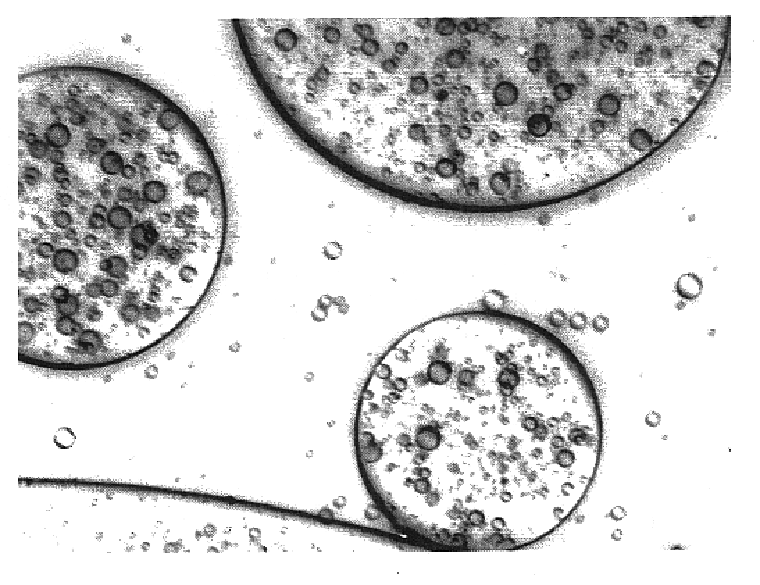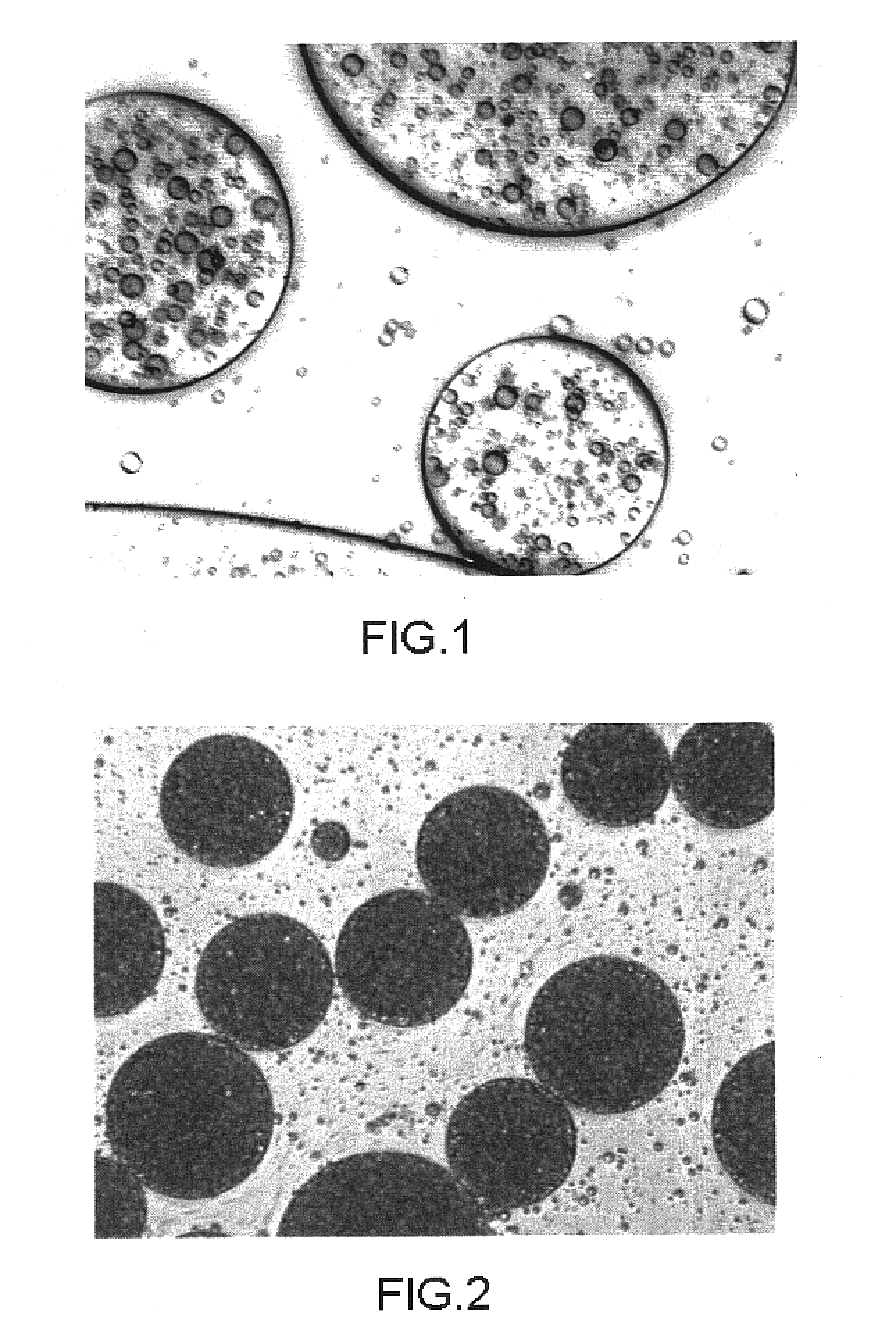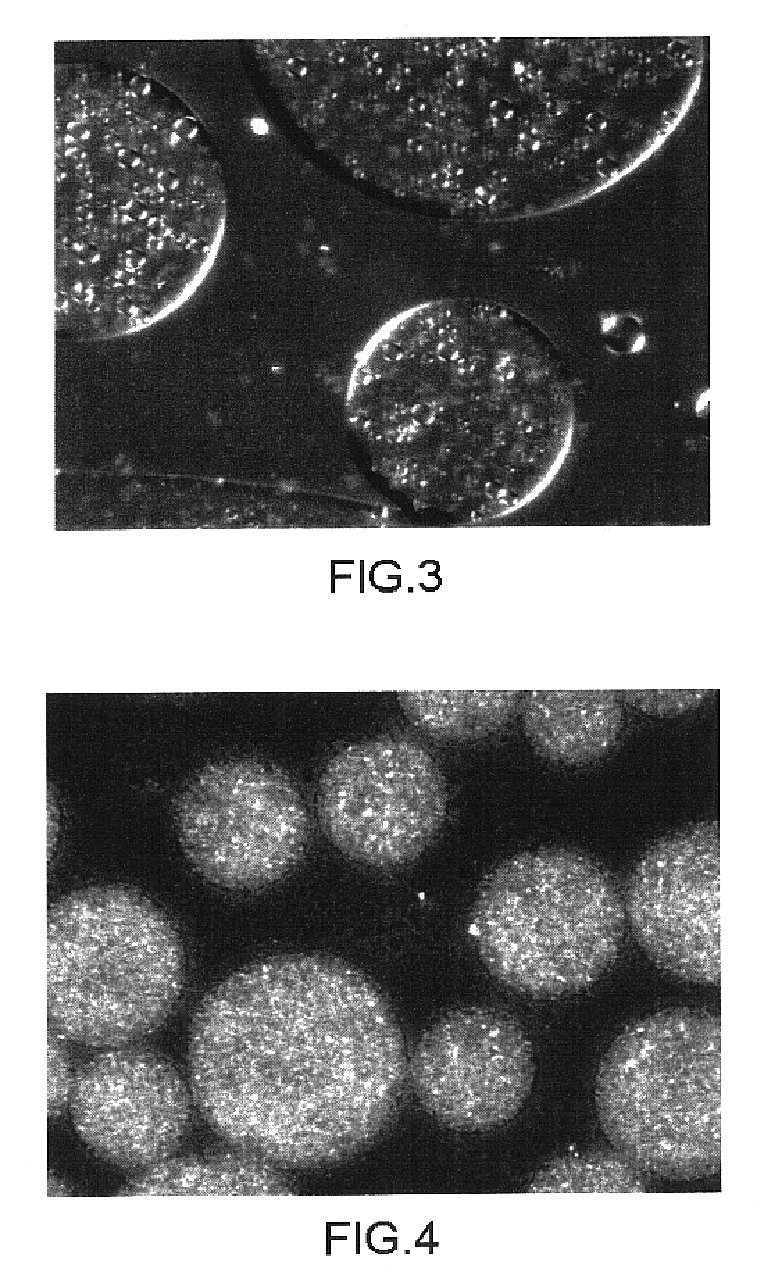Media in the form of complex dispersions, method for preparing same and uses
a technology of complex dispersions and media, applied in the field of new media in the form of complex dispersions, can solve the problems of low stability of wsub>1/sub>/o emulsion, inability to separate two media of the same nature, and circumvention of disadvantages
- Summary
- Abstract
- Description
- Claims
- Application Information
AI Technical Summary
Benefits of technology
Problems solved by technology
Method used
Image
Examples
example 1
Formulation Example
The implementation of the process according to the invention takes place in several stages. The first stage corresponds to the preparation of the lamellar lyotropic phase. The second stage is that of dispersion of this phase in the oil and the third stage corresponds to the emulsification of the oily dispersion in the aqueous continuous phase.
In this example, an aqueous solution of vitamin C, which will act as probe for the measurement of escape of example 3, is encapsulated.
The percentages are expressed by weight. This procedure is valid for amounts of the order of 10 to 100 g.
First Step:
Formulation 1
40% polyalkylene glycol of Elfacos ST9 type sold by Akzo Nobel10% polysorbate 6030% mineral oil sold as thick oil by Sigma20% of a 20% aqueous vitamin C solution.
After having mixed the first three constituents at ambient temperature, the 20% vitamin C solution is added and then mixing is carried out with a spatula for to 15 minutes until a homogeneous mixture is obta...
example 2
Visualization by Optical Microscopy
In this example, a product analogous to that obtained in example 1, but in which the vitamin C is replaced by a procyanidol oligomer (PCO, referenced ‘Grape seed extract’, obtained from Vinyals, Barcelona, Spain), is compared with a product obtained according to a double emulsion process described in the literature. The procedure is the same as in example 1 but with the following formulations.
2a —Complex Medium According to the Invention
Formulation A
40% polyalkylene glycol of Elfacos ST9 type sold by Akzo Nobel10% polysorbate 6020% mineral oil30% of a 10% aqueous PCO solution
Formulation B20% formulation A80% mineral oil
Formulation C20% formulation B80% 1% aqueous solution of polyalkylene glycol of Elfacos OW 100 type (Akzo Nobel)
2b —Double Emulsion (Comparative)
The double emulsion which is used for the comparison is obtained from the following formulation:
The percentages are expressed by mass.
A. A dispersion of Lipophilic Surfactant in the Oil is P...
example 3
Measurement of the Kinetics of Escape of Vitamin C
The measurement of kinetics of escape consists in quantitatively determining the vitamin C in the aqueous continuous medium of the complex dispersion prepared in ¢ example 1. To do this, first of all the aqueous and oily media of the external emulsion are separated and then the vitamin C is quantitatively determined by a chemical quantitative determination. For confirmation, the structure of a sample of the system is broken down, by addition of a detergent, in order to quantitatively determine all the vitamin C (final point).
a) Separation
The complex dispersion of example 1 is centrifuged at ambient temperature twice at 10,000 g. The supernatant, composed of the oily part, is separated and the low aqueous fraction is used for the quantitative determination.
The quantitative determination of the vitamin C is carried out by quantitative determination with iodine, according to a conventional method. 30 g of wa...
PUM
| Property | Measurement | Unit |
|---|---|---|
| Length | aaaaa | aaaaa |
| Length | aaaaa | aaaaa |
| Percent by mass | aaaaa | aaaaa |
Abstract
Description
Claims
Application Information
 Login to View More
Login to View More - R&D
- Intellectual Property
- Life Sciences
- Materials
- Tech Scout
- Unparalleled Data Quality
- Higher Quality Content
- 60% Fewer Hallucinations
Browse by: Latest US Patents, China's latest patents, Technical Efficacy Thesaurus, Application Domain, Technology Topic, Popular Technical Reports.
© 2025 PatSnap. All rights reserved.Legal|Privacy policy|Modern Slavery Act Transparency Statement|Sitemap|About US| Contact US: help@patsnap.com



